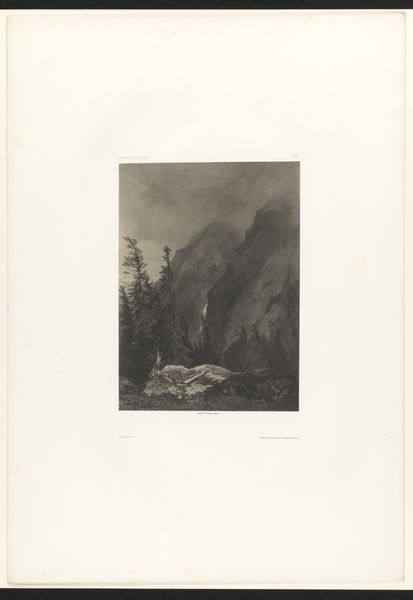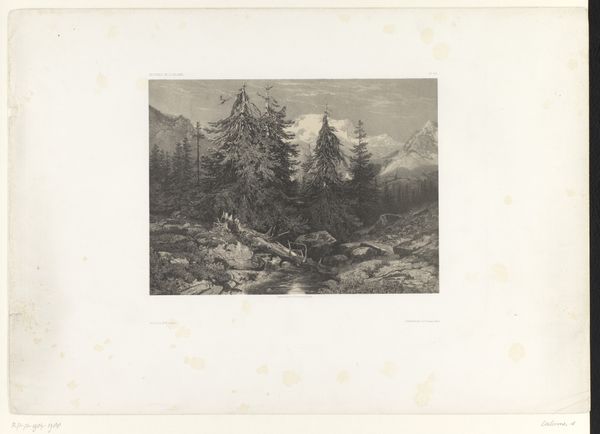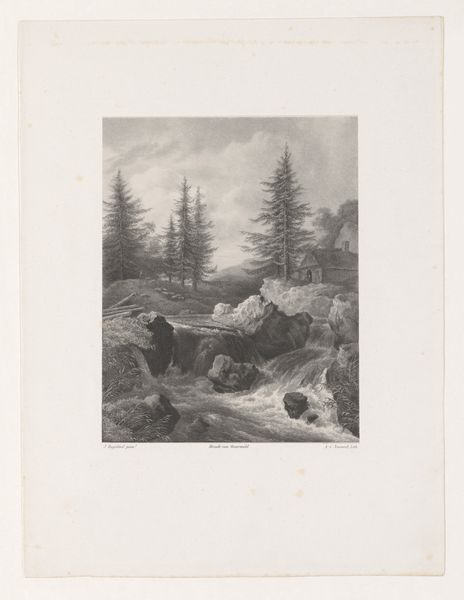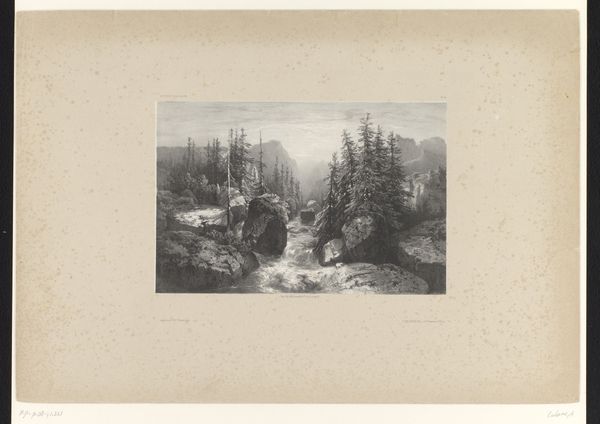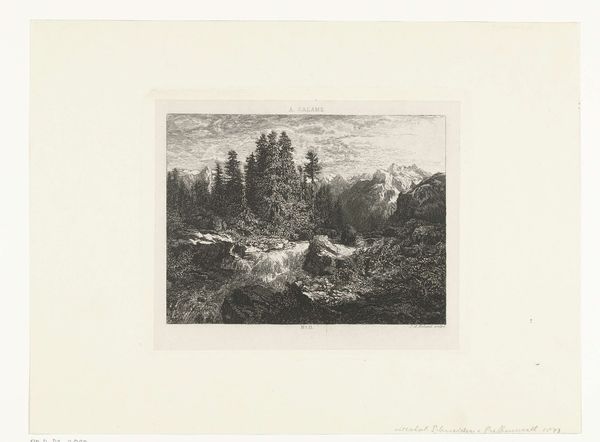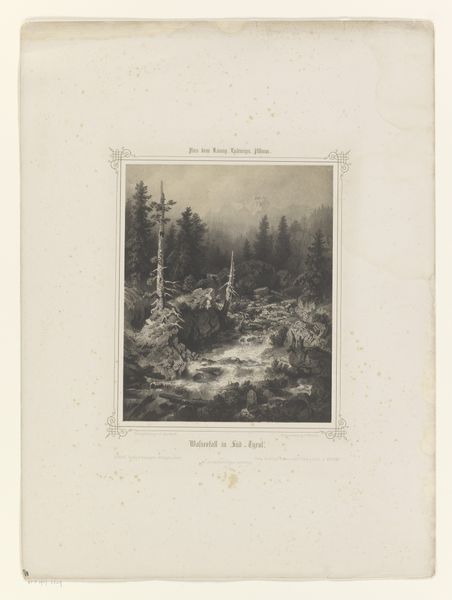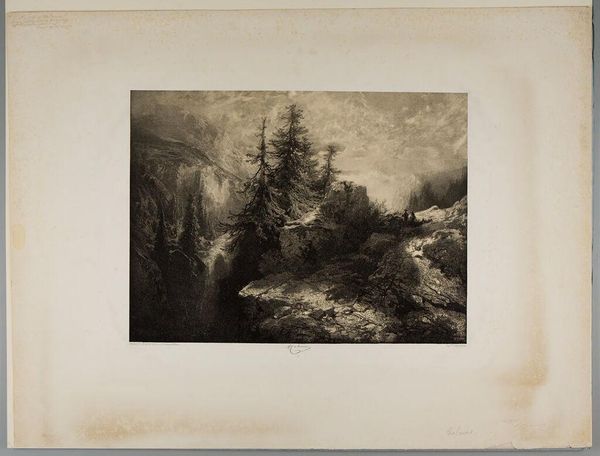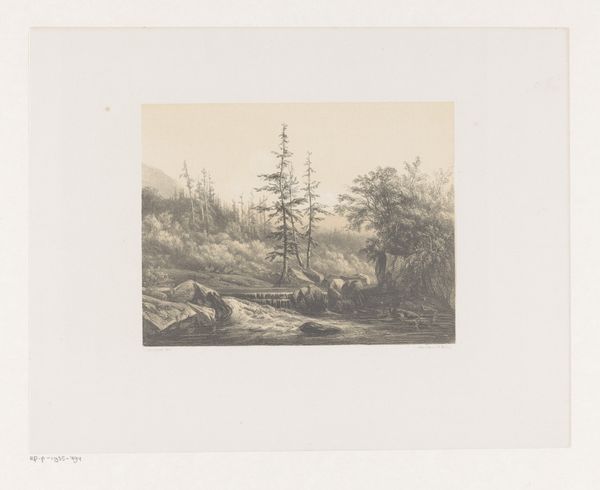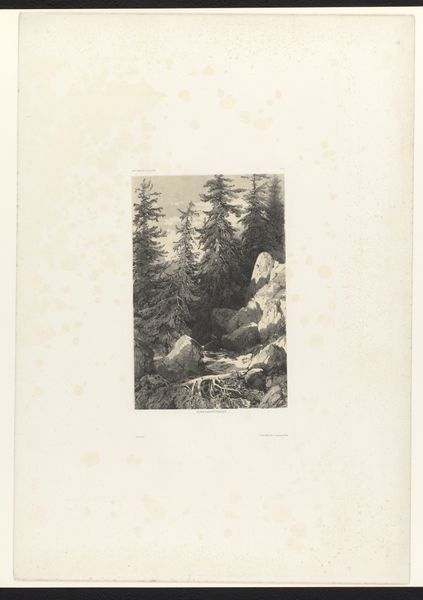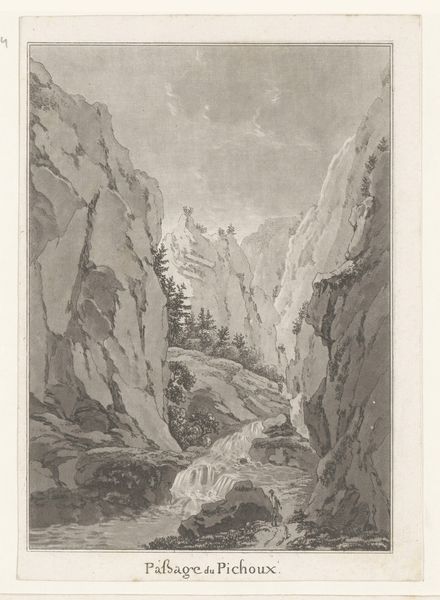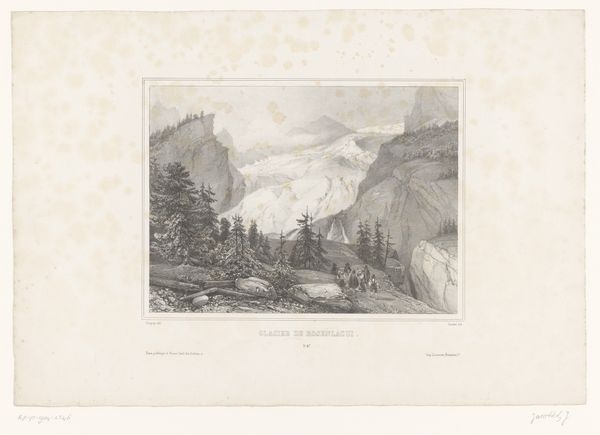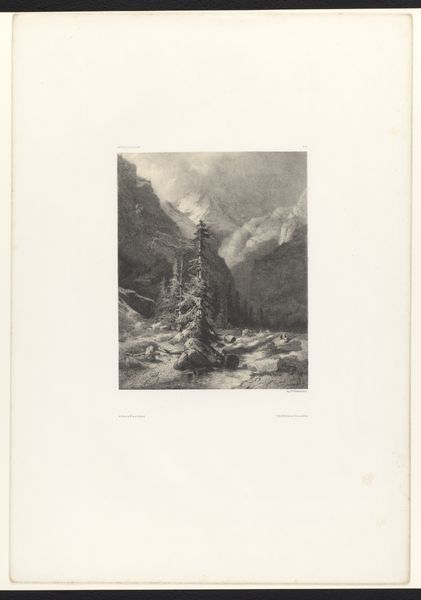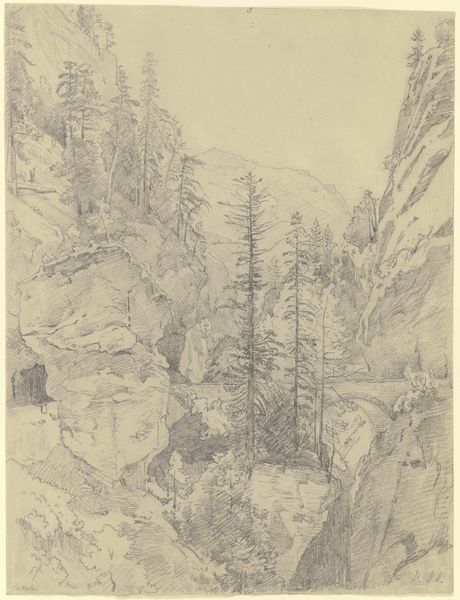
Dimensions: height 355 mm, width 263 mm
Copyright: Rijks Museum: Open Domain
Editor: So, here we have Jan Mesker's "Beek in berglandschap", created between 1867 and 1874. It’s an etching, depicting a stream in a mountain landscape. It really evokes a sense of the sublime for me. How would you interpret this work within its historical context? Curator: Considering the date, this work falls squarely into the late Romantic period. Landscapes were potent carriers of national and cultural identity. Do you notice anything about the composition that emphasizes a specifically *Dutch* cultural viewpoint, or conversely, defies it? Editor: I don’t really see anything specifically Dutch. It doesn't seem to be emphasizing a cultural perspective like you are pointing out. Perhaps its intent is not cultural? Curator: Perhaps, or perhaps the absence speaks louder. Consider that artists used landscapes to grapple with rapid urbanization and industrialization. Romantic landscapes frequently present an idealized, pre-industrial world, serving as a visual refuge, a constructed memory. But this artist, Mesker, shows what seems to me like an untouched scene, so should this artist have created work reflecting Dutch cultural perspectives, instead of Romantic art in general? What function would his art have had in that time? Editor: Hmm, interesting! Maybe by not being particularly Dutch, he was trying to tap into a broader European artistic movement and be relevant to an international audience. What do you make of the rather prominent dark rocks and trees, versus the somewhat bland or pale stream and falls? Curator: That’s a perceptive observation. In a politically turbulent time, the representation of seemingly “neutral” subjects was often far from neutral. Do you see any connection between these possibly uncultured themes and how powerful art institutions such as museums curate and display art, shaping public perceptions of value and national heritage? Editor: Wow, I hadn't considered it that way. So, even seemingly straightforward landscapes can be deeply intertwined with social and political currents, right down to the art world? Curator: Exactly. Every brushstroke carries a cultural fingerprint, intentionally or otherwise. Editor: That definitely changes how I see landscapes now! I’ll certainly look at these types of works from this period differently from now on. Thanks for sharing your insight!
Comments
No comments
Be the first to comment and join the conversation on the ultimate creative platform.
